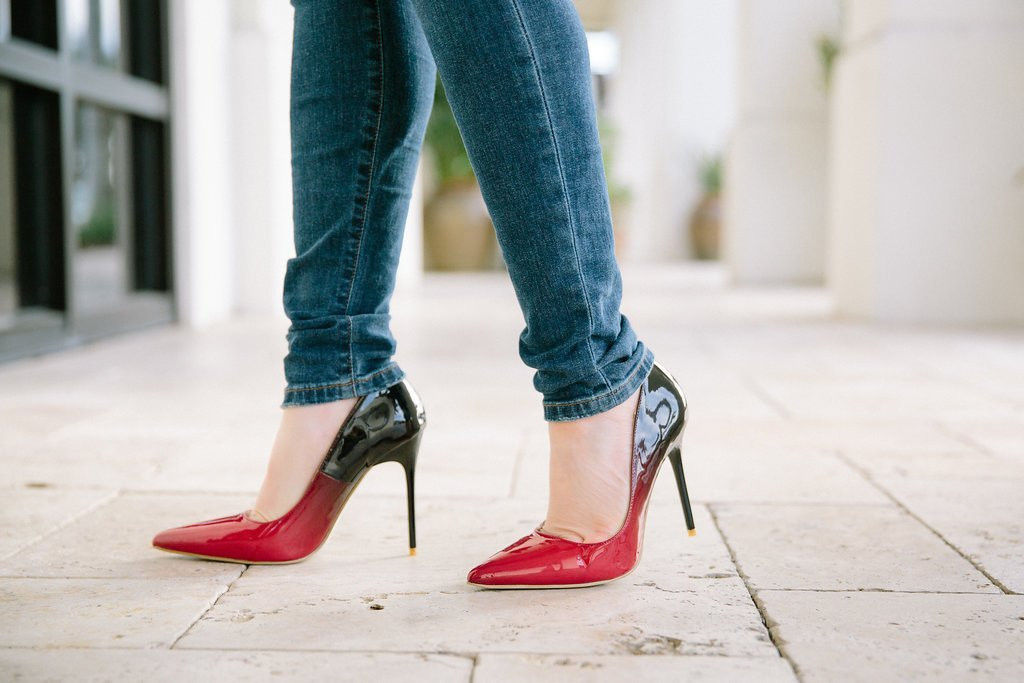 Salsa dancer in heels
Salsa dancer in heels
Learning to dance salsa was an exhilarating journey, but the moment I decided to add heels to the mix, it felt like I was starting all over again. My initial experiences with Dancing In Heels were far from graceful. My first pair of salsa shoes felt completely wrong; the lack of support made me feel unsteady with every step. The next pair was no better, pinching my toes in a way that made me feel awkward and clumsy. And let’s not even talk about the third pair – a complete disaster that slipped off my heel with every move, turning my ankles raw after just a short dance session.
The quest for the perfect dance shoe became an expensive obsession. Salsa shoes aren’t cheap, averaging around $120 a pair. My closet started overflowing with ill-fitting shoes, and my credit card bill was growing rapidly, a stark contrast to my entry-level salary and city living expenses. Yet, I was determined to find the right pair, convinced that they were the key to unlocking effortless movement, better balance, and quicker steps on the dance floor. I believed the right shoes wouldn’t magically transform me into a dance pro, but they had to make a difference, right?
Over a year, I accumulated twelve different pairs of dance shoes, each promising to be ‘the one’. I scoured online reviews, even ordered a custom pair from England, and drove hours to a specialized ballroom dance shoe store, desperate to find the perfect fit. My obsession stemmed from the belief that the right footwear was the missing piece of my dance puzzle.
Then, finally, I found them – my perfect dance shoes. But fast forward five years, now able to confidently dance in regular four-inch stilettos just as easily as in my ‘perfect’ dance shoes, I realized something profound. My initial struggle with heels wasn’t about the shoes at all; it was about my own dance skills and physical preparedness.
Finding the right dance shoes is undoubtedly important. The style, material, and heel placement all play a significant role. Not all dance shoes are created equal, and brands vary in how well they suit different foot shapes and sizes. However, I learned that even more crucial than the shoes themselves is the strength of your body and how you engage your muscles.
When I began salsa dancing, my feet, ankles, and calves simply weren’t strong enough to handle dancing in heels. I hadn’t developed the necessary muscles or the proper technique to transfer weight and generate movement from the ground up. Switching shoes constantly was like buying a top-of-the-line oven and expecting to become a master baker without ever learning basic recipes. The tools matter, but skill and strength matter more.
The journey to finding the right dance shoes is often trial and error. You’ll likely invest in a few pairs that don’t quite work before discovering your ideal match. Dance shoes stretch and change with use, so even a perfect fit in the store might feel different after a few dance classes or nights out.
So, be patient with yourself as you learn to dance in heels. Building the necessary strength and confidence takes time and consistent practice. Like any skill, persistence pays off. Those initial frustrations will eventually fade as you become more comfortable and proficient dancing in heels.
If you’re on the hunt for your perfect pair of Latin dance shoes and want to improve your heel technique, here are some essential tips to guide you.
Tips for Choosing Your Salsa Dance Shoes
-
Start with a Lower, Flared Heel. It might be tempting to go straight for sky-high stilettos, but trust me, there’s nothing elegant about wobbling around and disrupting your partner’s balance because you can’t actually dance in your shoes. Begin with a 2-inch or 2.5-inch flared heel. As you build strength and stability in your feet and ankles, you can gradually increase the heel height to 3-inch, 3.5-inch, or even 4-inch heels. Remember, everyone starts somewhere. Those dancers who seem effortlessly graceful in towering heels? They were beginners once too! You’ll be dancing confidently in those super tall, sexy stilettos before you know it.
-
Understand Your Foot Shape to Find the Right Style. Knowing your foot shape is key to selecting a shoe style that fits well and provides the support you need. Do you have narrow heels? Look for shoes with a higher, tapered heel cup. Short toes? Styles with many toe straps might not be the best choice. High arches? Opt for shoes with straps that can wrap under the shoe and around your arch for extra support. If you’re buying online and can’t try shoes on in person, contact the shoe company’s customer service. They can offer personalized advice on the best styles for your foot shape and clarify sizing differences between brands. Utilizing foot shape charts available online can also be incredibly helpful in guiding your choice.
-
Size Down for Dance Shoes. Salsa shoes are designed to fit snugly and will stretch as you dance and break them in. Therefore, when purchasing dance shoes, aim for a size that is one to two sizes smaller than your regular street shoe size. They should feel quite tight when you first try them on. This snug fit ensures better control and prevents your foot from slipping inside the shoe, which is crucial for stability when dancing in heels.
Exercises to Strengthen Your Feet and Ankles for Dancing in Heels
-
Engage the Ball and Inner Sides of Your Feet. Proper foot engagement is vital for building the correct muscle strength for Latin dancing, especially in heels. Focus on using the ball and inner sides of your feet as you move through each step. Practice basic steps and simple patterns like the Suzy Q or forward walks slowly and mindfully. Pay close attention to how you are using your feet. Ensure your weight is centered on the balls of your feet and push off from one step to the next using the inside edge of your feet. This targeted engagement strengthens the muscles needed for balance and control in heels.
-
Practice, Practice, Practice in Your Dance Heels! This might seem obvious, but it’s surprising how many dancers practice in flats or sneakers and only switch to heels for social dancing or performances. If your goal is to dance comfortably and confidently in heels, you need to practice in them regularly. After warming up in bare feet or flat shoes to prepare your muscles, put on your heels, even if it means you wobble a bit more at first. Consistent practice in your dance heels is the most direct way to build strength, improve balance, and get accustomed to the feel of dancing in elevated footwear.

